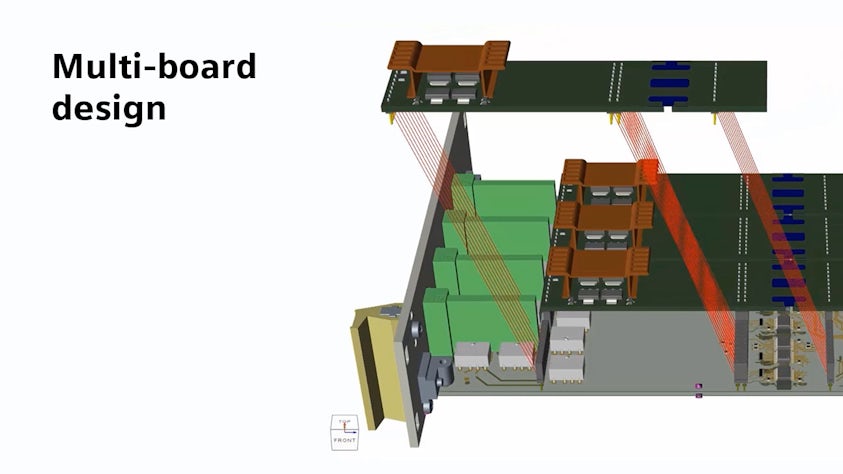Systems design automation
Xpedition allows the project architect to define and capture the hardware description at the logical system level down to the logical/PCB level, including the logical definition of wires, cables and backplanes.
Primarily targeted to capture the full system connectivity, the cockpit extends to other areas, such as design validation and requirement tracing. Integration with the data management backbone provides a comprehensive infrastructure to securely manage the complex development process of many individual project components through revision management, access control and release and information management of work-in-progress system design data, including single board and cable designs.
System definition
System definition capabilities allow a system designer to visualize and implement the system engineer’s design intent, to create optimal function location and interconnectivity across the system. The key element in the system definition is a logical board. Designers define logical boards at the logical system view level by simply grouping system level blocks and on-board connectors. This process is straightforward and very intuitive. The designer simply partitions system functions using system level blocks that will play the role of regular hierarchical blocks later in the PCB design. The designer can create the system level block locally, place it from the corporate library, or reuse existing PCB design portion.
Cable design
Xpedition supports cable connectivity definition and optimization, MCAD integration and management through to BOM and manufacturing drawings.
System modeling
Xpedition allows engineers to virtually prototype multi-board systems for mechatronic behavior, signal/power/thermal performance, and manufacturability.
System design reuse
Most of the time, designers have associated documentation that needs to be kept together with specific system design elements. The Xpedition multi-board system design solution allows designers to specify additional information and to add more details to system objects, such as system level blocks. The benefit of this feature is to keep the data intact and where designers can easily access it, even in a dynamically changing environment.
Designers can also leverage existing IP by importing and embedding Microsoft Visio data into the system design. This capability extends beyond simple object linking and embedding by converting the Visio objects to regular Xpedition system design objects. Designers can then perform full editing and modification of the individual objects.
Collaborative concurrent design
Xpedition and its work-in-progress design management hub moves engineering collaboration to a new level. Multi-board systems design is a business process that engages numerous disciplines. Xpedition provides the integration between these disciplines by only passing key data between them. The tool understands how elements in one discipline are dependent on elements in another discipline and it pro-vides notifications when a dependent element changes. The tool liberates design data from the desktop and pro-vides controlled, unified data storage. The Xpedition multi-board systems design solution provides an all-domain collaboration client that operates on the versioned, unified data with notification, cross-probing, mark-up, and comments. The solution provides consistent, integrated design process management.
Diver deeper into this topic

As a best practice, implement model-based systems engineering for cross system optimization regarding size and performance. Read more in our multi-board design blog or listen to our podcast on multi-board PCB design.